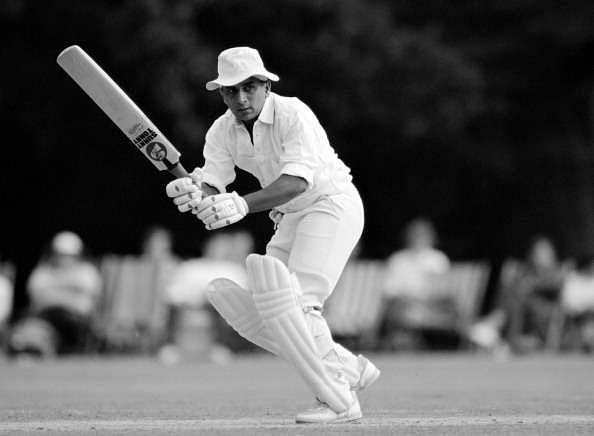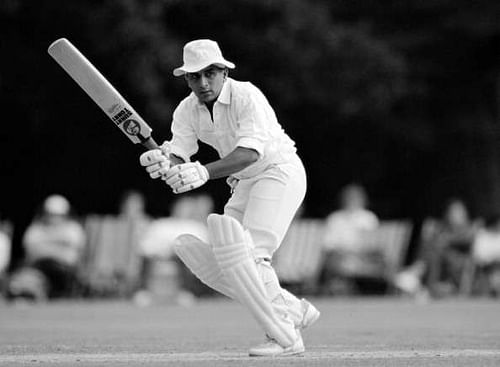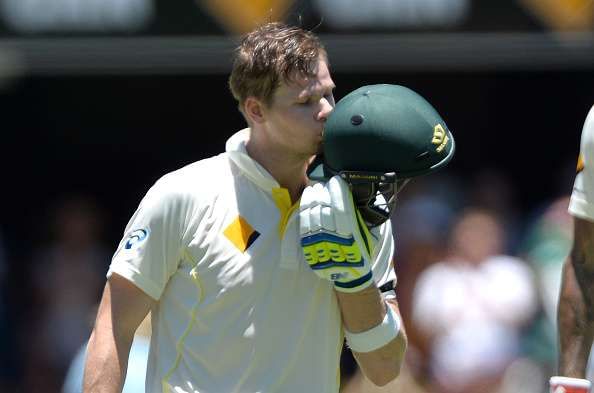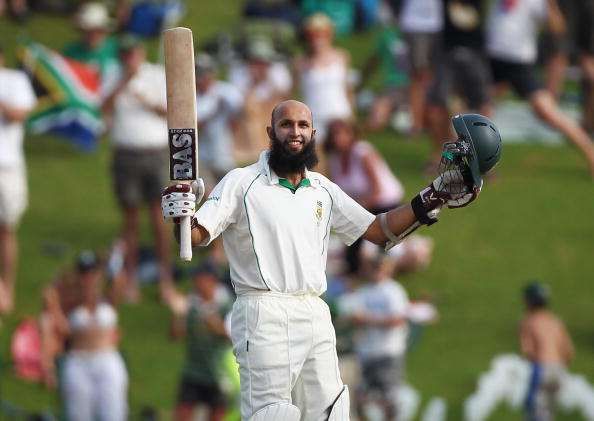
The Sunil Gavaskar book of Test batting – Is it still valid in the modern era?

Sunil Gavaskar played during a generation where fast bowlers dined on batsmen. The West Indian quicks, the Australian quicks, the Pakistani quicks – there were geniuses all around the world who could make a leather ball talk on all kinds of surfaces.
And the ball could talk all languages; a different language under conditions that were conducive to swing, a different language when it could reverse on the dry grounds of the subcontinent and a different language on the fast bouncy surfaces of Australia. But, he survived all that becoming the first man to score 10,000 runs in Test cricket, a colossal achievement coming from a nation that was largely trying to find its feet in international cricket.
Also read: Sunil Gavaskar's 10,000th test run: The videotape now goes missing
He finished on 34 centuries, the most by any batsman until Sachin Tendulkar eventually waltzed past it – one Little Master overtaking another, along with a few others.
A lot has changed in cricket in the new millennia, though. Bats have become bigger; grounds a little smaller. Batsmen have become a little more audacious and a little less patient. Batsmen are being dropped from teams for scoring slowly in Test format, a format where the term ‘slow scoring’ was a paradox couple of decades ago. That begs the question, is the classical style of batting still relevant.
What was the classical style of batting?
As more and more people talk about the contrast in batting in the modern age and back in the 60s, 70s and 80s, one might wonder what the fuss is all about. Sunil Gavaskar still fondly remembers those days every now and then while doing commentary for a match, while chiding a batsman for playing an airy shot, while questioning the needlessness of aggression in a mismatched situation, while arguing about the merits of over-attacking stroke-play. Sample some of these:
1) Batsmen were punished by their coaches if they played a shot six inches above the ground. Batsmen scored runs only if they found gaps. Modern day batsmen take the aerial root as often as they can with nonchalance irrespective of how often they hole out, mis-hitting.
2) The classical style perfected by batsmen like Rahul Dravid involved grinding out the bowlers to dust. As the adage goes – ‘you give the first hour of play to the bowlers and the rest of the day is yours’. Batsmen are rarely patient enough to play out that one hour these days.
The attacking shot is almost always around the corner – the slash past point, the slog sweep, the pull, the lofted extra cover drive or straight down the long on.
3) Playing in the V was a big part of Gavaskar’s philosophy. This meant, until fully set, batsmen played in the arc with a straight bat making it less risky. Modern day batsmen play quite a lot with the angled bat - flicking, driving, cutting and slashing the ball with nonchalance.
4) Leaving the ball was a habit batsmen inculcated into the very thread of their existence. Geoffrey Boycott’s ‘Corridor of Uncertainty’ is now a very popular term in cricketing parlance but in Gavaskar’s book of batting, there was a way to deal with deliveries of every line and every length and batsmen from that school knew where their off-stump exactly was.
A lot of modern day batsmen don’t really believe in leaving the ball and are often seen slashing at, driving or reaching out for deliveries on sixth or even the seventh stump. They score faster but their cricket is riskier too.
5) 4s and 6s are perceived differently too. Three decades ago, a 6 was a blue moon event. Not anymore. Batsmen regularly step out to spinners, pull fast bowlers and loft them. Rohit Sharma is a classic example of the modern day batsman, who gets out playing a lofted drive in one innings and still comes back and plays the same shot the next innings.
While singles were the staple of batsmen of the yore, batsmen in modern day cricket believe in exploiting the large open spaces. That is why the run-rates have moved from somewhere between 2 and 2.5 to upwards of 3.5. Interestingly, teams have managed to score even at a run a ball when they are looking to score fast before a declaration.
What the numbers say?

Patience is a virtue that was more on display during the Gavaskar era than it is now. In all, there are 36 Test batsmen with an average of over 50 in Test cricket, the qualification mark being 2,000 runs. Of those, Steve Smith is at the highest position at seventh amongst modern day batsmen with an average of 58.55, despite playing with protection, covered pitches and not having to face the likes of Thomson, McGrath, the West Indian quicks, Wasim and Waqar or Sir Richard.
Kumar Sangakkara is the next at 10 with an average of 57.4. Jacques Kallis, Joe Root, Sachin Tendulkar and Younis Khan are the next four. In all, 17 players are from the era after 1990 and very few of them burst onto the scene after 2,000.
When we look at the strike-rates in the last 10 years, for batsmen with more than 1,000 runs during this period, players like Virender Sehwag, David Warner, Sarfraz Ahmed, T Dilshan and Ben Stokes all figure over the 70 mark and there are a dozen batsmen with strike-rates of over 60. In all of the 70s and 80s put together, only Kapil Dev had a strike-rate of above 80 (85.20).
Vivian Richards is the only other batsman with strike-rate of over 70. Four batsmen had strike-rates of over 60. Quick scoring has definitely improved and it is an evolution that is slowly unravelling in cricket.
So, is the classical batting out of vogue?

Definitely not. From Hashim Amla and AB de Villiers to Faf du Plessis, Cheteshwar Pujara and Virat Kohli to Ajinkya Rahane most of the top sides have batsmen who are technically sound.
Kane Williamson, Joe Root, Asad Shafiq, Misbah-ul-Haq and Alastair Cook have all shown the virtues of batting long even in the modern era. Cook is third on the list of batsmen with most number of minutes batted in the last 10 years, 31,786, behind Sangakkara and Rahul Dravid, two batsmen who continued to stay relevant with their orthodox techniques despite playing amongst other aggressive batsmen. In fact, all three batsmen were the bedrock of their batting orders.
On the flip side, teams, as a whole, are less resilient than they used to be in foreign conditions, as seen in the performances of top sides like South Africa and Australia on turning pitches or the performances of India in those countries. There are very few batsmen around the country, the likes of Kane Williamson, Ajinkya Rahane and Steve Smith, who have scored runs around the world in all conditions. While Smith is unorthodox in his style, Rahane and Williamson have taken a leaf right out of Gavaskar’s coaching manual.